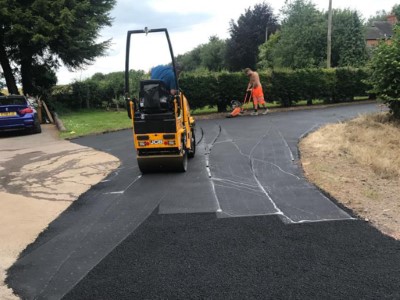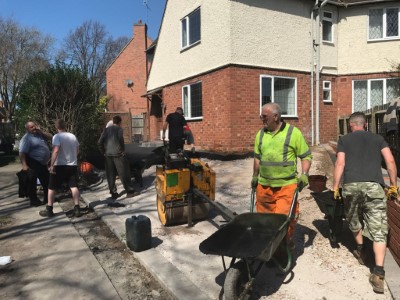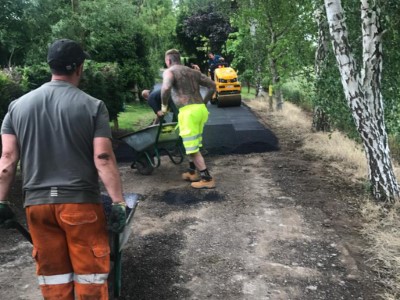Tarmac driveways are one of the oldest and most certainly one of the most common types of driveway surfacing choices available. Durable, providing good value for money and simple to maintain, it has been a steadfast performer for a long time.
Most driveways are mostly now laid using SMA (stone mastic asphalt) but we will still commonly refer to it as tarmac or asphalt driveways. Its a very solid surface which once laid correctly has a very dense finish which will help direct the surface water easily off. As it is used on roads, you can imagine how durable it will be for your driveway!
Here are 2 different ways of getting tarmac / SMA / asphalt laid at your home. Lets start with resurfacing….
Resurfacing
Resurfacing a hard standing area is generally quite acceptable as long the area is sturdy and shows no subsidence. If it has subsidence, we recommend getting the area cut out and patched up to bring it back level to the rest of the area. If it has multiple areas, it is more cost effective and makes more sense to replace the driveway instead.
The important part of resurfacing is the finished level of the new surface and ensuring it comes back in at the same level on areas such as pavements, adjacent surfaces and levels at your house. To achieve this, a channel is chipped out around the perimeter to allow the new surface to be bedded back down at the same level.
A bitumen bonding agent is applied over the entire surface once it has been reinforced as needed and cleaned off. This bonding agent will help the new surface bond appropriately to original driveway. The new tarmac / SMA surface is applied on top and provided the original driveway had a suitable pitch on it for surface water, it can follow the original driveway levels. Otherwise, ensure the driveway is pitched approx. 1:80 to ensure a suitable fall.
It has become fairly common now to put in a bordering strip around the driveway which is easily achievable since the driveway perimeter would of been chipped out anyway.
Laying A New Tarmac / SMA Surface
The original driveway area will be excavated and removed during a new installation instead of a resurfacing project. The excavation depth will vary depending on the existing base in place as it makes no sense to replace an already solid foundation whereas a bad foundation might require excavation of 10 inches or more to replace it. Any approved installer who guarantees their work will not mess around with this stage and ensure the base is solid, regardless of the work involved since driveway subsidence a year or 2 later will mean them having to replace it all again.
Kerbing, drainage, inspection chambers and similar are generally added at this stage and set to the proposed finishing height of the new tarmac surface.
A new base of Type 1 MOT foundation is laid into the area and machine rolled to lock it in place. If it was a deeper excavation, crushed concrete or type 3 MOT stone will be installed first and then Type 1 MOT on top of it.
The brick on edge, cobblestone or edging is set in this stage into a solid concrete bed around the perimeter of the driveway. This should be set solid to ensure it will not move at a later stage as it will be used to contain the edging of the surface and not just to provide some decoration.
A base wearing course of tarmac / SMA is now applied with a new finishing course of SMA / tarmac laid on top of it. Ensure a fall of 1:80 if it is achievable to direct the surface water.
The base wearing course should be 20-25mm dense and be laid to an approx. 2 inch depth compressed with the finishing course being 6-10mm density(depends on your preference) and laid to 1 inch compressed depth on top.
The finished surface should be machine rolled and compacted with a lighter compaction used in areas the roller cannot extend onto. For example a pathway or area where edging might get damaged.
Another option is a single course of tarmac at 3 inch compressed depth which works just as well on a driveway as 2 layer approach would. If the driveway will be seeing heavy duty vehicles regularly, we do recommend a 2 course finish as the base course is significantly denser and will support heavy weight easier.
You can see more examples of tarmac driveways here or you can learn about our tarmac installation services here.



